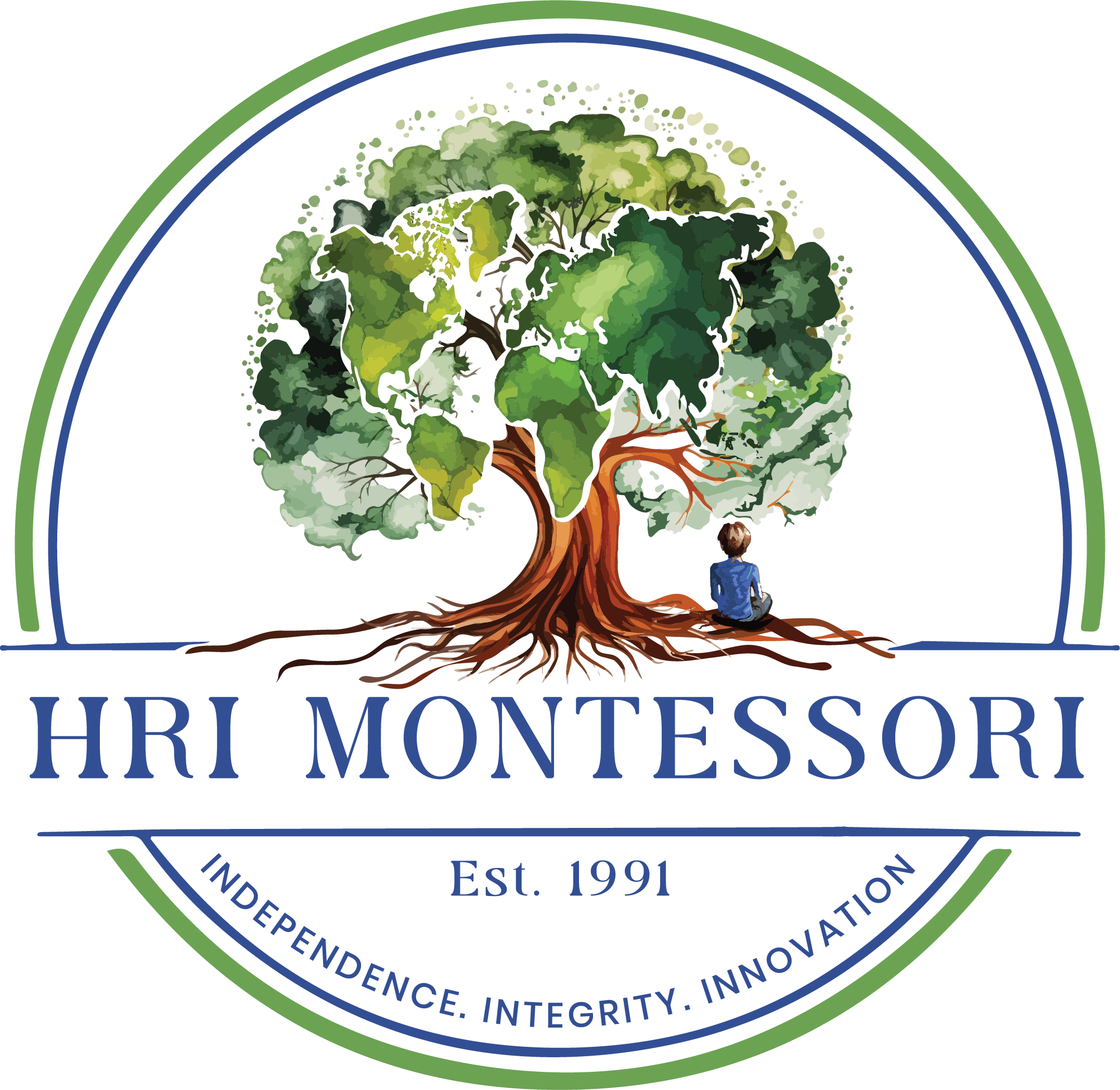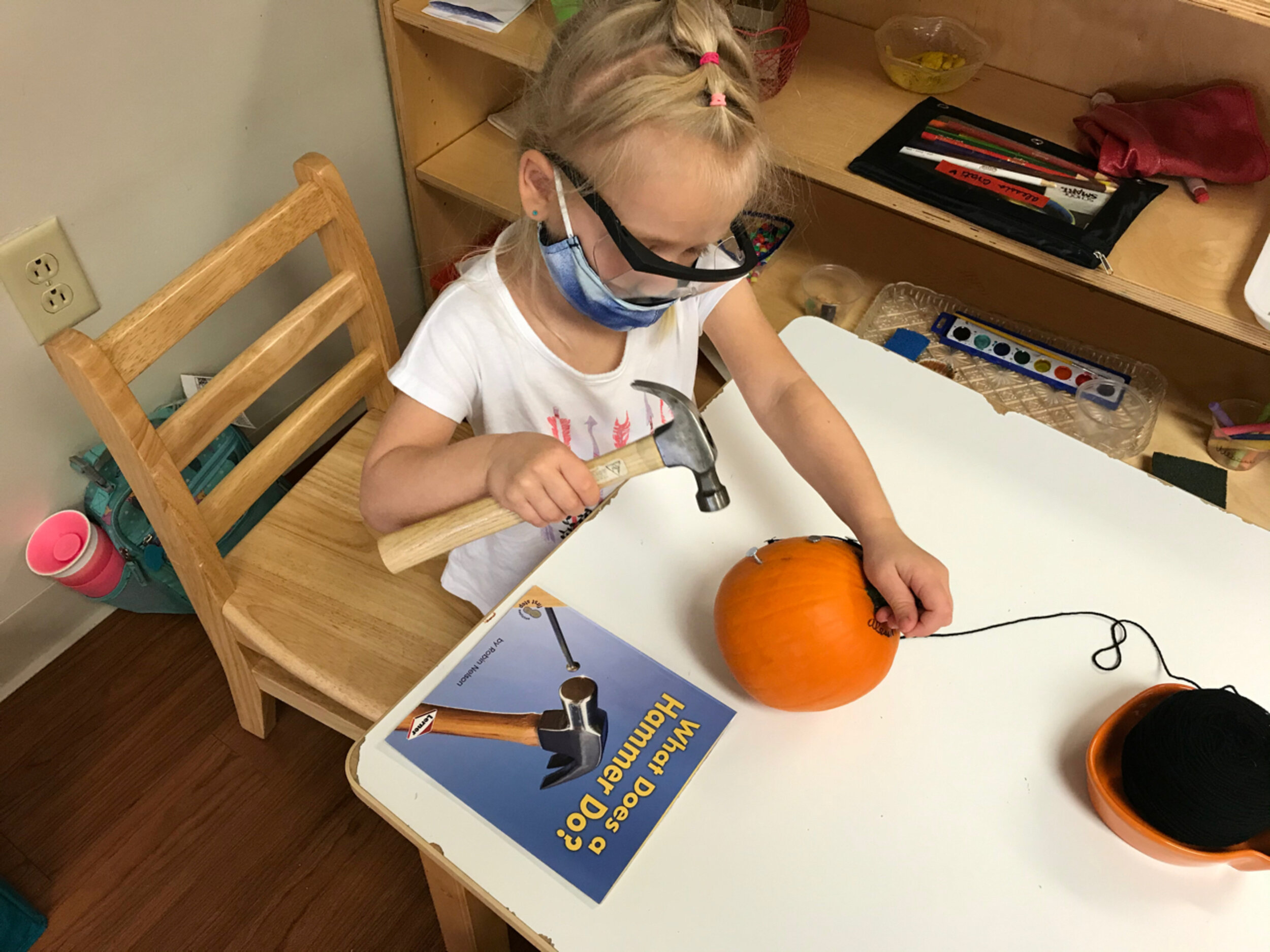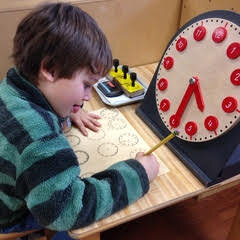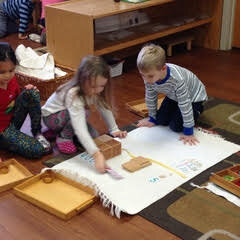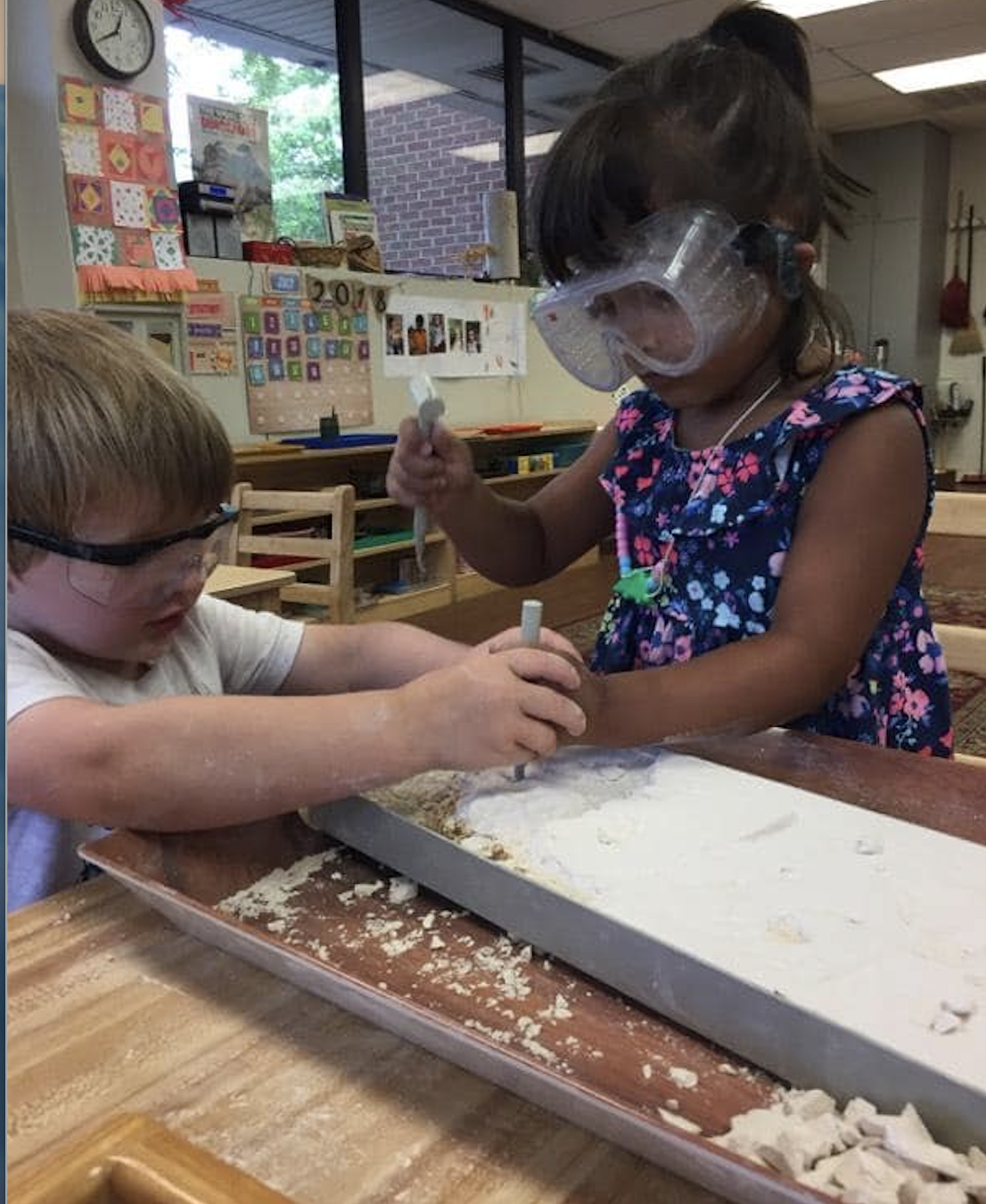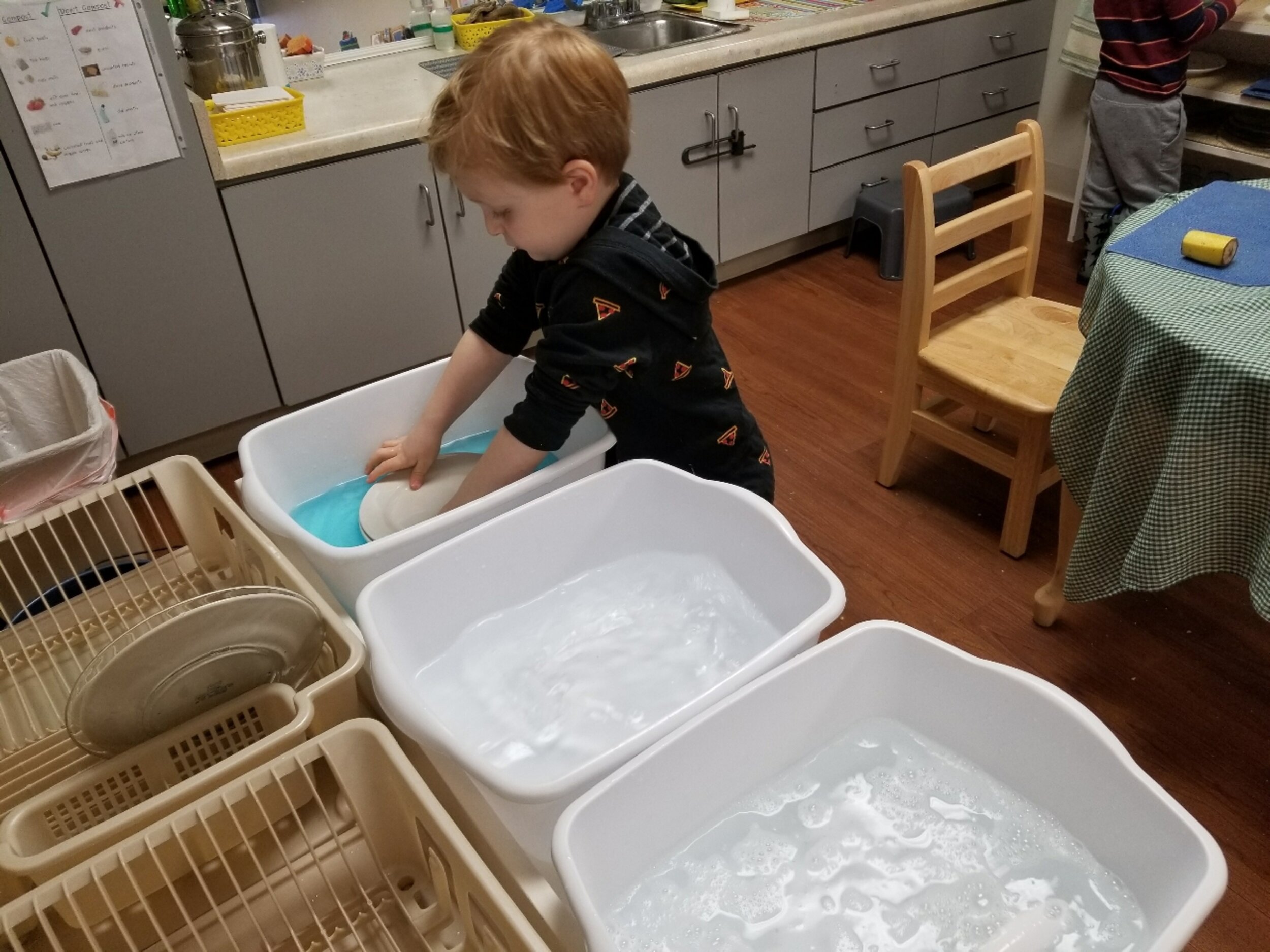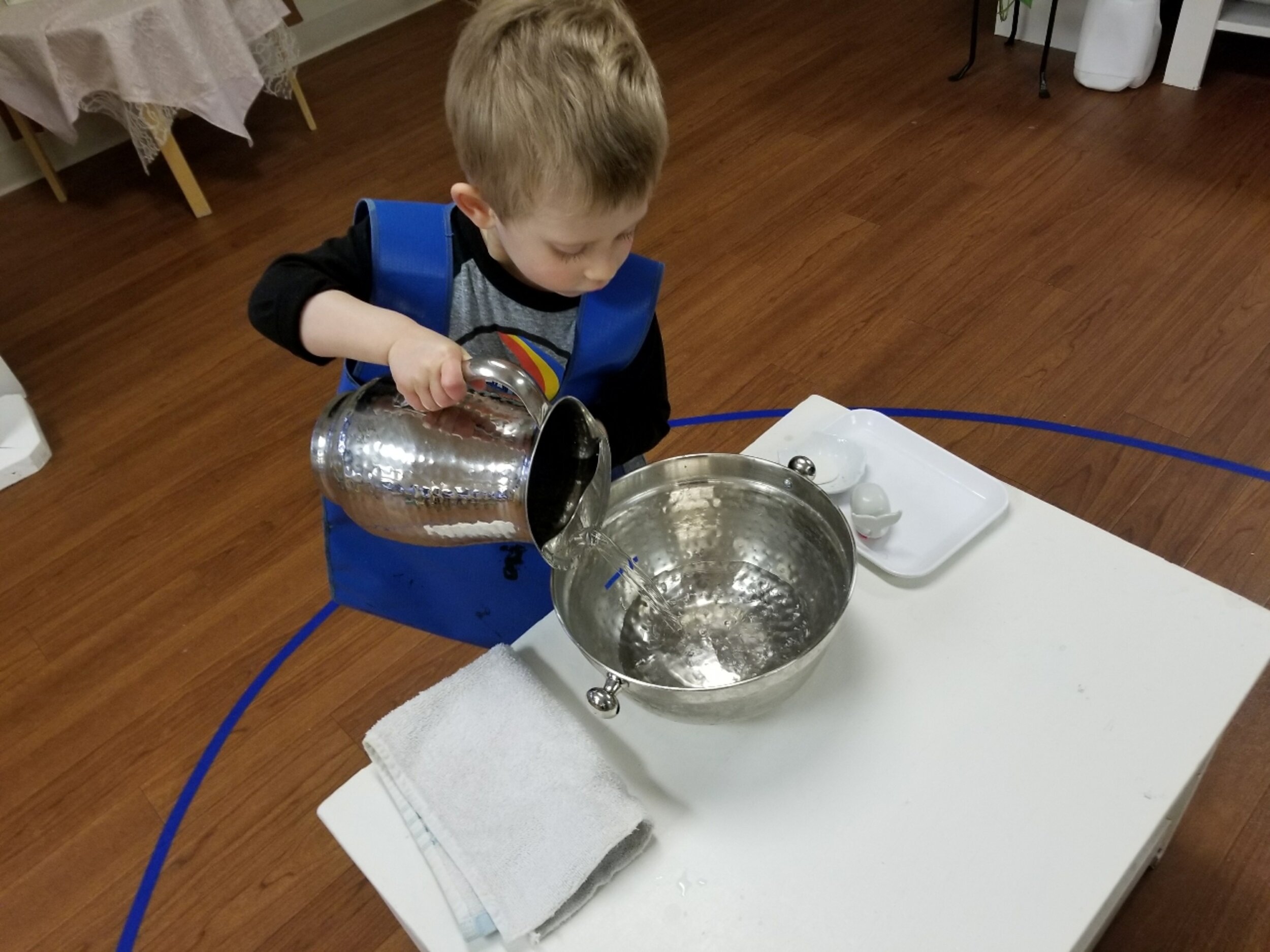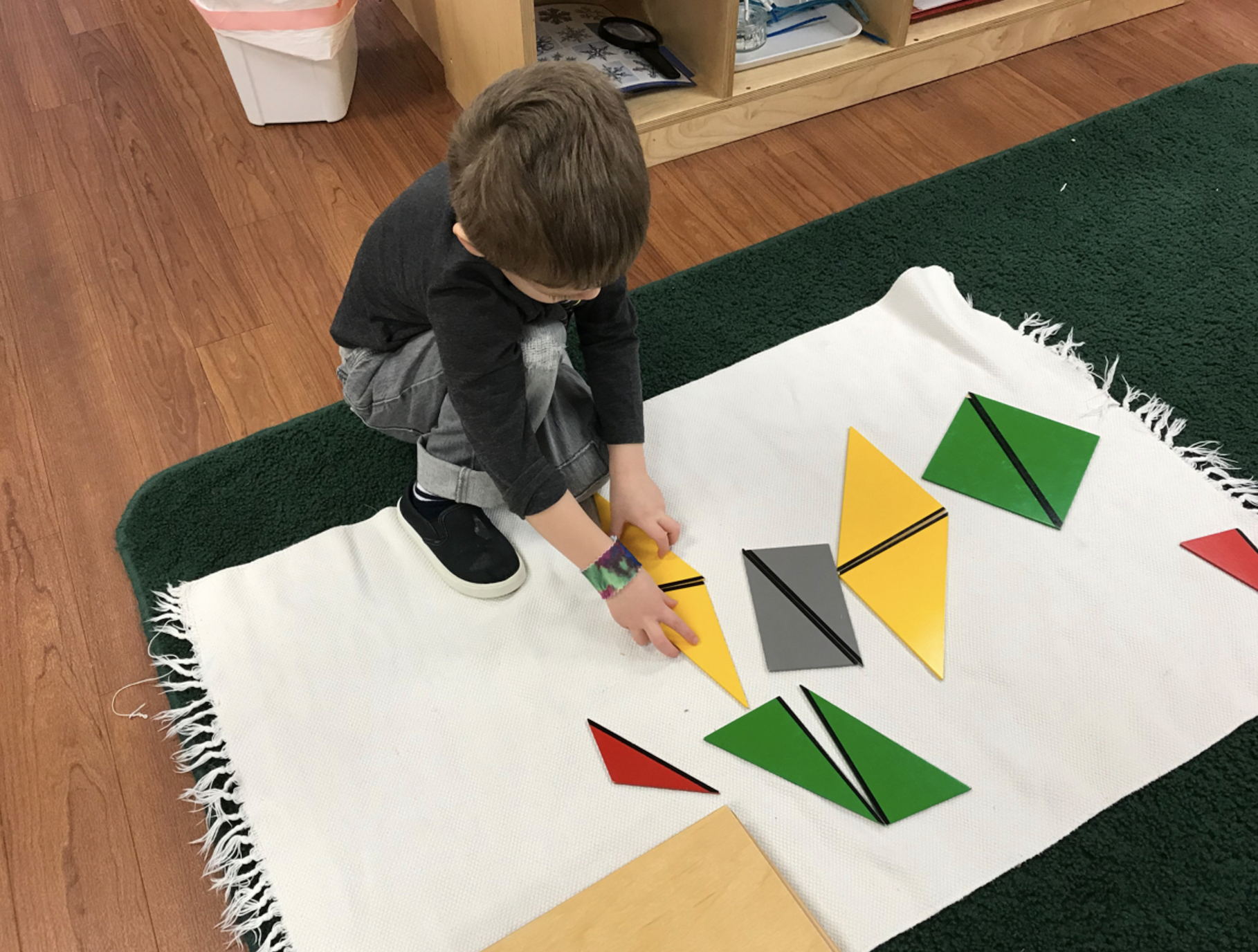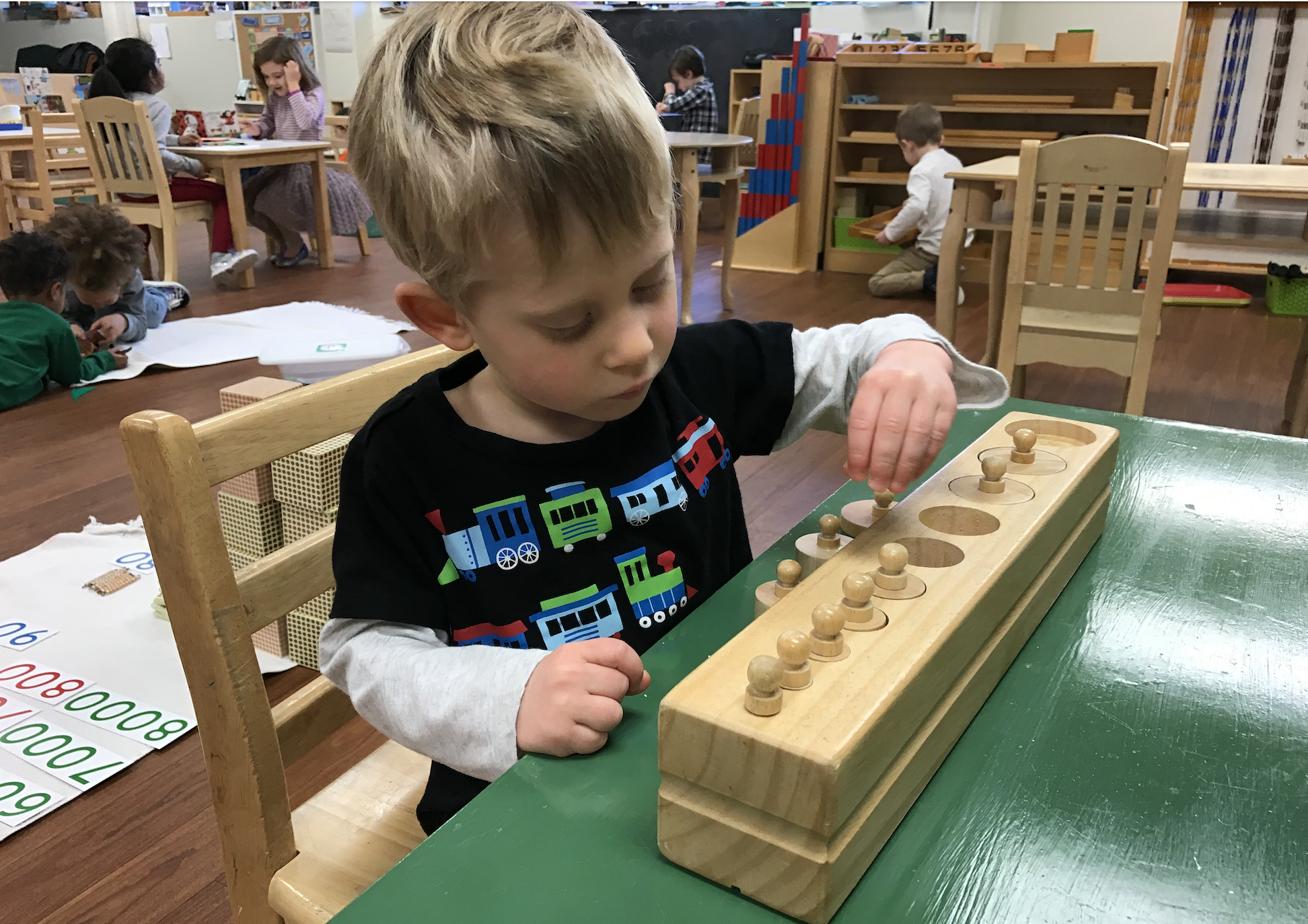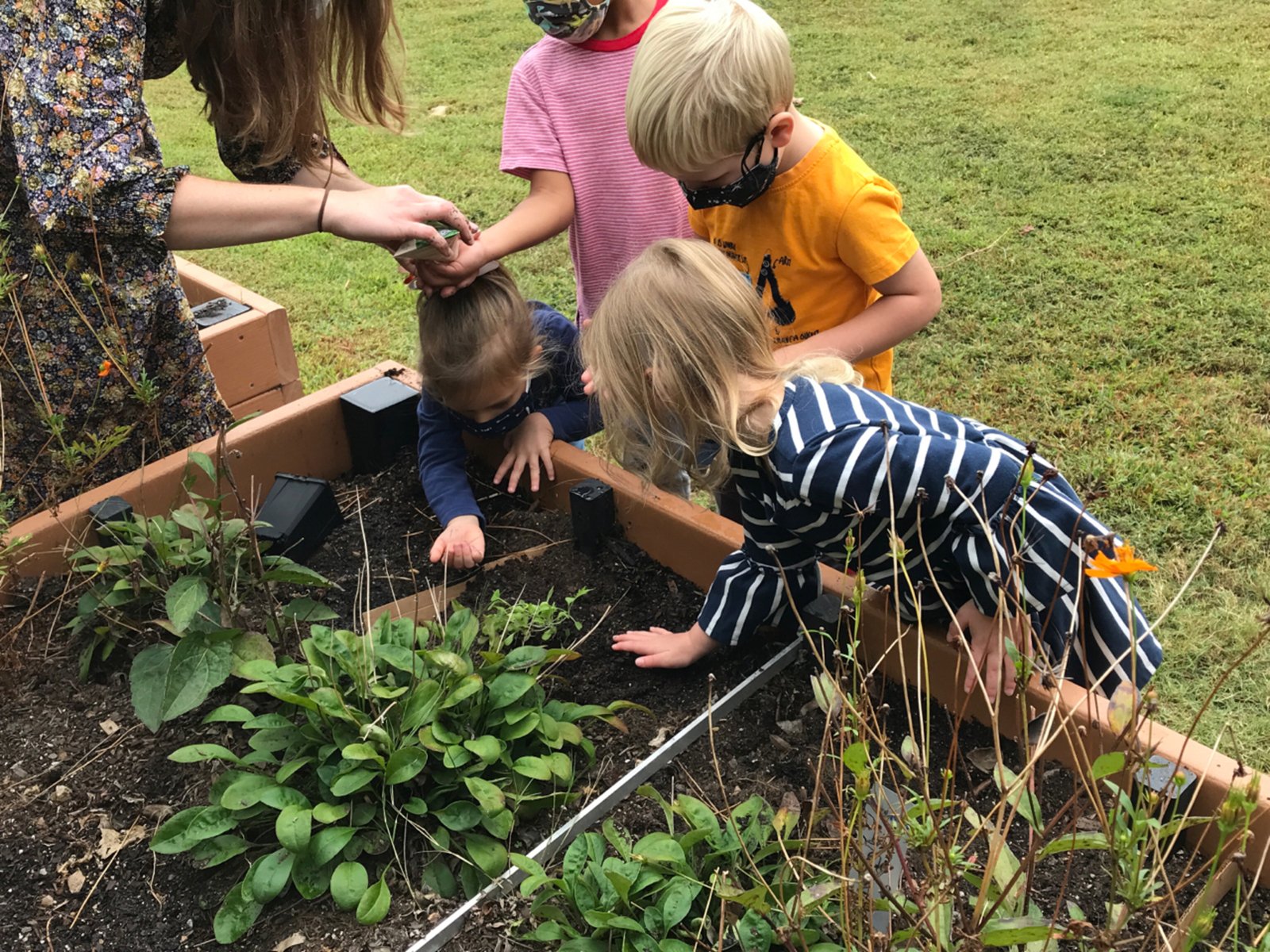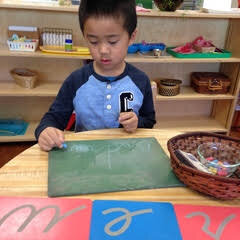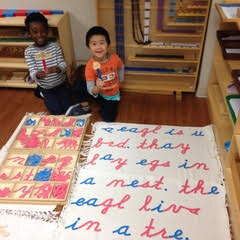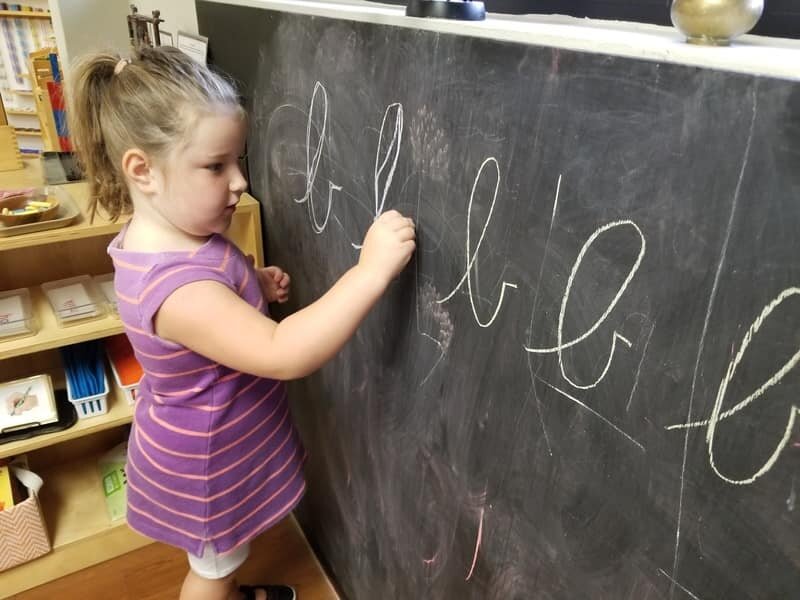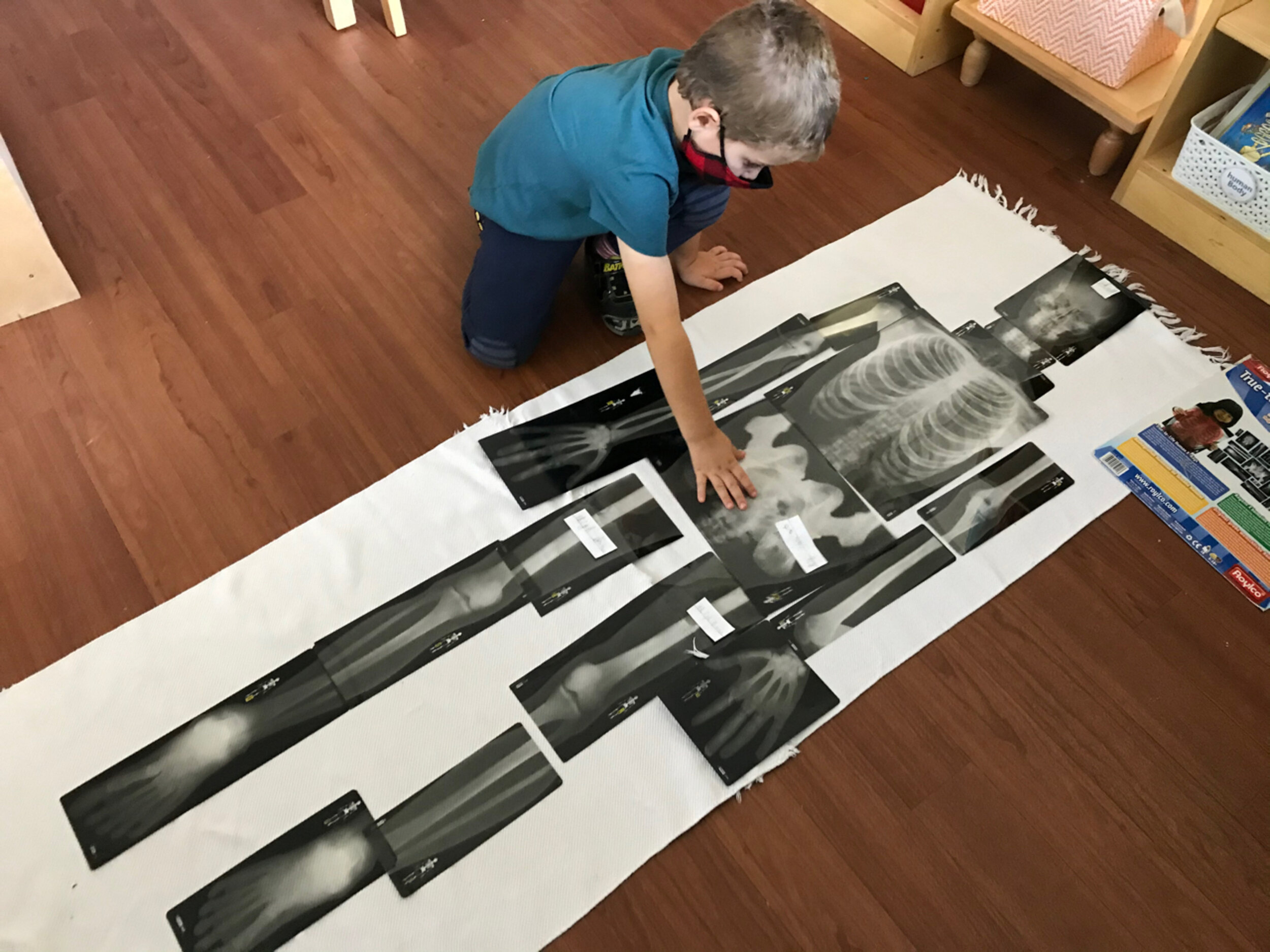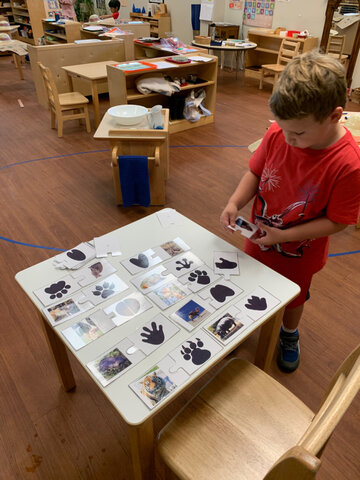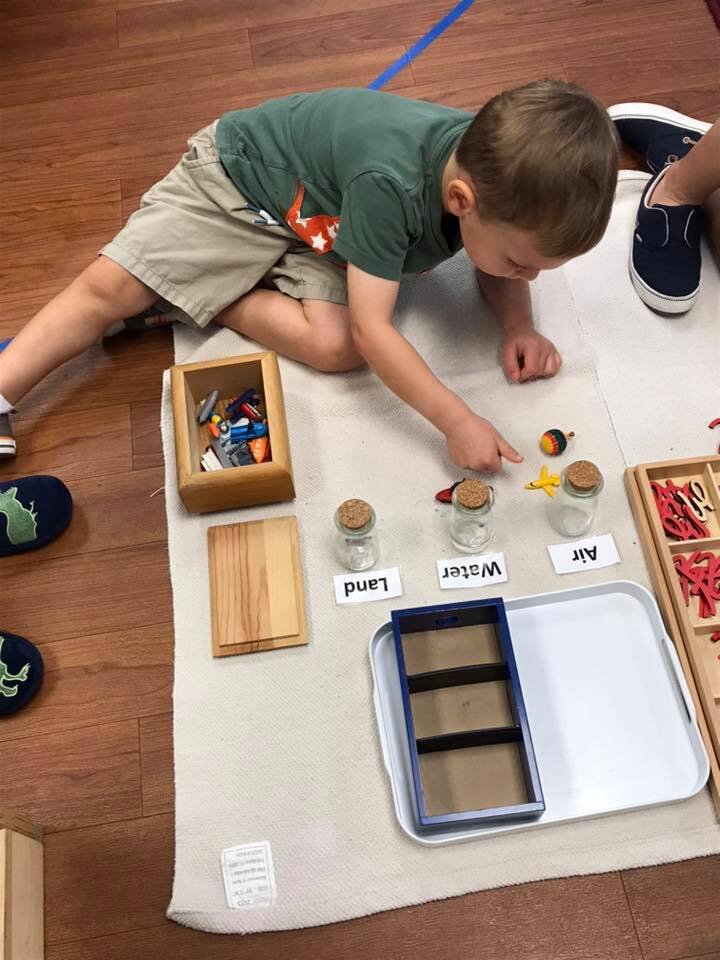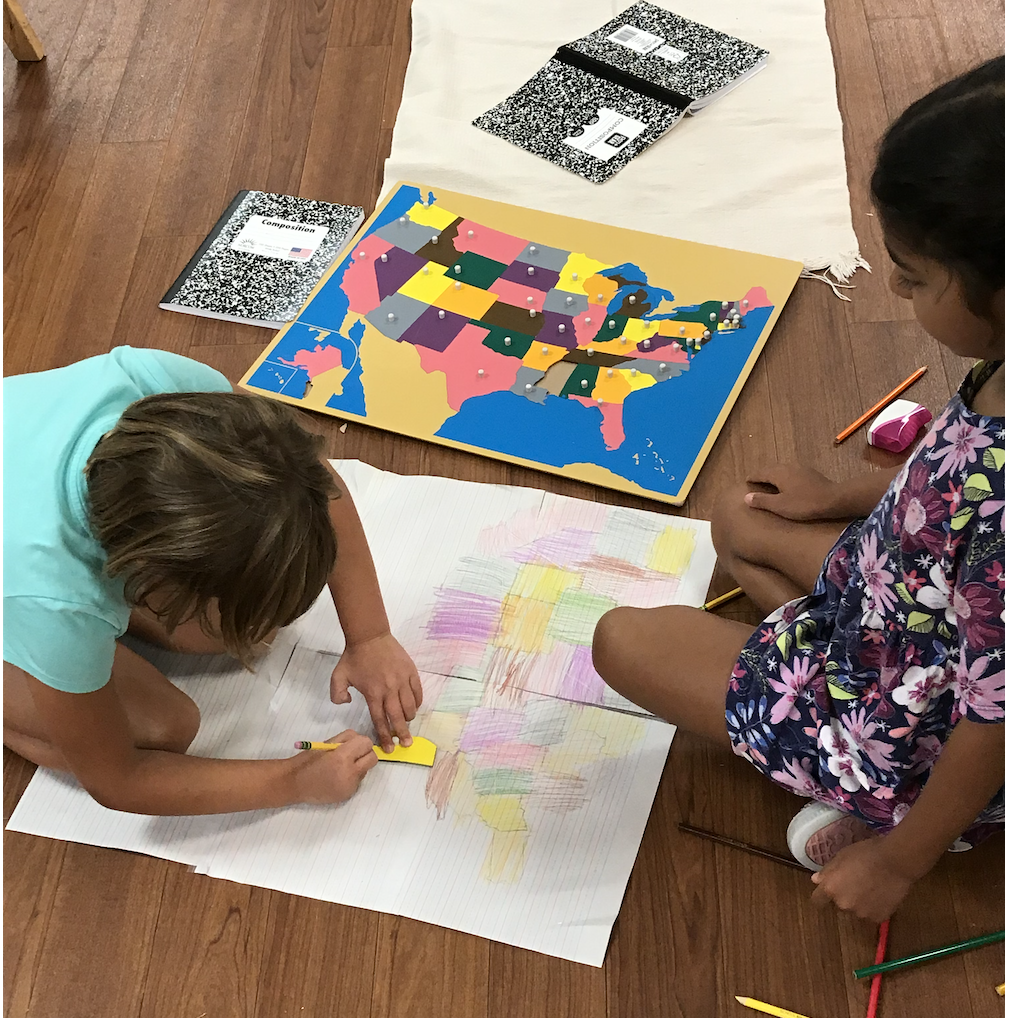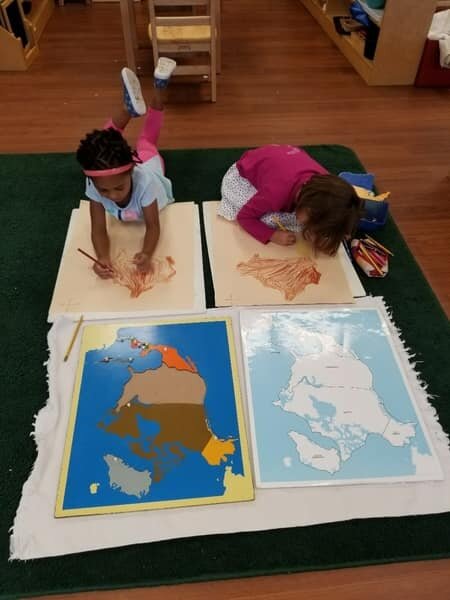Children’s Houses: AGES 3 - 6 YEARS
“The little child’s first movements were instinctive. Now, he acts consciously and voluntarily, and with this comes an awakening of his spirit…”
— Dr. Maria Montessori, The Absorbent Mind
Practical Life
"Help me to do it by myself"
The practical life area is considered the link to the child's home environment as the activities include many of the tasks carried out at home, such as food preparation, washing dishes, polishing, and lessons in social grace and courtesy. Use of the practical life materials inspires care for one's self, for others, and for the environment. These fulfill specific purposes in the real world and are designed to help children gain self-confidence, coordination, and a sense of order.
Sensorial
Young children learn through their senses. The Children's House classroom contains carefully designed materials that allow the child to explore his world through sight, touch, sound, taste, and smell. These sensorial materials capture specific qualities that lead to refinement of the senses. These materials help the child order and classify impressions around him. Through manipulation of materials, the children build cognitive skills and explore the physical properties of their environment.
Mathematics
Montessori math concepts emerge from the concrete manipulation of many materials including the decimal system and counting materials. Children have the opportunity for hands-on experiences and perform operations of addition, subtraction, multiplication and division. The understanding of basic mathematical concepts prepares the child for later abstraction and develops reasoning and problem-solving abilities.
Language
The ability to use language is one of the basic tendencies of humans and is vital to human development. Young children are constantly acquiring language; building their vocabulary and their ability to express themselves. The Montessori materials are designed to engage the child in this process. Sandpaper letters are used to introduce the child to phonics, leading in time to writing with a Moveable Alphabet and eventually to the use of pencil and paper for expression. Montessori students generally develop a great love and appreciation for reading and books a characteristic that stays with them through life.
Geography, Cultural Studies and Science
This area presents the dynamic of man, the environment, and their mutual relationship. The visual impression of the whole world is given first through exploring simple globes. The child then progresses into more detailed classification of physical geography, while learning about the people and cultures in other countries and the environments and animals with which they live. Through an integrated curriculum including art and music, the children develop an awareness and appreciation of the global human family and become directly involved with other nations through ongoing humanitarian projects.
